Beelitz Heilstätten – Männerklinik
Die zwischen 1898 und 1930 von der Landesversicherungsanstalt Berlin errichteten Arbeiter-Lungenheilstätten Beelitz-Heilstätten bilden einen der größten Krankenhauskomplexe im Berliner Umland. Es ist ein denkmalgeschütztes Ensemble von 60 Gebäuden auf einer Gesamtfläche von ca. 200 Hektar [Wikipedia].
Einige Gebäude wurden inzwischen saniert und durch neue Gebäude ergänzt. So wurde im Zuge von Dreharbeiten Teile der Männerklinik in ihren ursprünglichen Zustand gebracht.
Beelitz Heilstätten – Whitney Houston Haus
Die Beelitzer Heilstätten wurden ab 1898 durch die Landesversicherungsanstalt Berlin errichtet und umfassen 60 Gebäude auf etwa 200 Hektar. In zwei Bereichen nördlich der Bahnlinie von Berlin entstanden die sogenannten Lungenheilstätten, in den beiden südlich gelegenen Bereichen die Sanatorien zur Behandlung von nicht ansteckenden Krankheiten. Die beiden Bereiche waren jeweils zusätzlich nach Geschlechtern getrennt: westlich der Landstraße die Frauen-Heilstätten und -Sanatorien, östlich derselben die Männer-Heilstätten und -Sanatorien.
Das sogenannte Whitney Houston Haus gehört zu den Lungenheilstätten für Männer und wurde zwischen 1898-1902 gebaut und beherbergte etwa 186 Betten.
Beelitz-Heilstätten – Männerklinik (Klinik Gebäude)
Die Bilder stammen aus dem Behandlungsgebäude der Männerklinik der Beelitzer-Heilstätten.
Beelitz-Heilstätten – Männerklinik (Verwaltungsgebäude)
Die zwischen 1898 und 1930 von der Landesversicherungsanstalt Berlin errichteten Arbeiter-Lungenheilstätten Beelitz-Heilstätten bilden einen der größten Krankenhauskomplexe im Berliner Umland. Es handelt sich hierbei um 60 Gebäude auf etwa 20 Hektar Fläche. Die Gesamtanlage war für ihre Zeit mustergültig und zeigt den medizinischem Aufwand mit dem gegen die Tuberkulose zum Ende des 19. Jahrhunderts vorgegangen wurde.
Die Bilder zeigen ein Verwaltungsgebäude, das zur Männerklinik gehört hat.
Mushrooms
Fly agaric – Fliegenpilz (Amanita muscaria) is generally considered poisonous, deaths from its consumption are extremely rare, and it is eaten as a food in parts of Europe, Asia, and North America after parboiling. The name of the mushroom in many European languages is thought to be derived from its use as an insecticide, when sprinkled in milk. The red-and-white spotted toadstool is a common image in many aspects of popular culture, especially in children’s books, film, garden ornaments and greeting cards.
Pear-shaped puffball – Birnenstäubling (Lycoperdon pyriforme) is a saprobic fungus and is present throughout much of the world. Emerging in autumn, this puffball is common and abundant on decaying logs of both deciduous and coniferous wood. It is considered a choice edible when still immature and the inner flesh is white.
Verdigris agaric – Grünspan Träuschling (Stropharia aeruginosa) is a medium-sized green, slimy woodland mushroom, found on lawns, mulch and woodland from spring to autumn.
Spiny puffball – Igelstäubling (Lycoperdon echinatum) has been found in Africa, Europe, Central America, and North America, where it grows on soil in deciduous woods, glades, and pastures.
Magpie Fungus – Spechttintling (Coprinopsis picacea) was first described in 1785 by French mycologist Jean Baptiste François Pierre Bulliard.
Potsdam – Orangery Palace
The Orangery Palace (Orangerieschloss) is also known as the New Orangery on the Klausberg, or just the Orangery. It was built in the style of the Italian Renaissance, after the image of the Villa Medici in Rome and the Uffizi in Florence.
Frankfurt – Eisener Steg
The Eiserner Steg (Iron Bridge) is a pedestrian-only bridge over the Main river and connects the incorporations Römerberg and Sachsenhausen. The bridge was built in the year 1868 and was the second bridge to cross the Main in Frankfurt.
Frankfurt am Main
Frankfurt is the largest city in Hesse and is situated at the centre of the larger Frankfurt Rhine-Main Metropolitan Region. The city is known as the financial, trade fair and transportation centre of Germany and the largest financial centre in continental Europe. The city has been Germany’s financial centre for centuries and it is the home of a number of major banks and brokerages. The airport is the third busiest airport by passenger traffic in Europe. Furthermore, it is is Germany’s most expensive city, and the 10th most expensive in the world…
Frankfurt is one of the few European cities with a significant number of skyscrapers, meaning buildings at least 150 m (492.13 ft) tall and 12 out of a total of 13 skyscapers in Germany are located in Frankfurt.
The Römer is a complex of nine houses and the middle house became the city hall, which includes on the upper floor the Kaisersaal (“Emperor’s Hall”) where the newly crowned emperors held their banquets.
